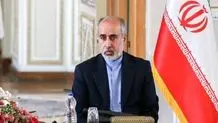Iranians celebrate Nowruz, rebirth of nature
The festival of Nowruz marks the conclusion of an old year and the beginning of a new one, traditionally celebrated on the day of the vernal equinox.

MEHR: The festival of Nowruz marks the conclusion of an old year and the beginning of a new one, traditionally celebrated on the day of the vernal equinox.
The word Nowruz (Novruz, Navruz, Nooruz, Nevruz, Nauryz), means new day; its spelling and pronunciation may vary by country.
Nowruz means 'new day' in Persian and stands as the most important festival in Iran.
This Iranian celebration is also observed in various countries spanning the Middle East, Central Asia, South Asia, the Balkans, and East Africa, with a history dating back over 3,000 years.
Throughout its long history, the holiday has evolved, with distinct regions maintaining or creating unique customs, while also incorporating new ones.
Regardless of the location, the essence of Nowruz remains a commemoration of rejuvenation and new beginnings.
Nowruz traditions vary widely, though some are relatively commonplace. Preparation for the new year includes the arrangement of the haft-sīn—a spread of seven items representing renewal and springtime. Its centerpiece is the sabzeh, a sprouting plant, which symbolizes rebirth.
Communal festivities include bonfires, feasts, and celebrations of culture such as musical performances, poetry readings, and traditional sports.
Inscribed in 2009 on the Representative List of the Intangible Cultural Heritage of Humanity as a cultural tradition observed by numerous peoples, Nowruz is an ancestral festivity marking the first day of spring and the renewal of nature.
It promotes values of peace and solidarity between generations and within families as well as reconciliation and neighbourliness, thus contributing to cultural diversity and friendship among peoples and different communities.
Nowruz is the day when winter changes into spring in the northern hemisphere, and it feels like a new beginning. In Iran, it is followed by four days of public holidays, and schools and universities close for two weeks.
People begin preparing for the celebrations weeks in advance. They thoroughly clean their homes, from carpets to windows and curtains, with the whole family pitching in. Any damaged items are fixed or replaced, and the house is adorned with flowers. Through this spring cleaning ritual, they rid themselves of negativity from the past year and welcome positivity in the upcoming one.
People prepare a special table in their homes, where they place small dishes holding seven symbolic foods and spices. The names of these foods all start with the letter 's' in Persian and so the table is called the 'seven s's' (Haft-seen).
The dishes generally contain wheat or bean sprouts (sabze), vinegar (serke), apples (sib), garlic (sir), a wheat-based pudding called samanu, a red spice called sumac, and senjed, a kind of wild olive which is common in the region. Other symbolic objects can include goldfish, painted eggs, candles and a mirror. The seven s's symbolise life, love, health and prosperity.
Fire forms an important part of the celebrations, and bonfires are built and lit on the streets for four Tuesdays in the weeks before Nowruz. On the last Tuesday, people observe the Festival of Fire (Chaharshanbe Suri), which involves jumping over these fires, which is believed to bring health and good luck in the new year.
Iranians spend the night of Nowruz with their family. The traditional New Year dinner is white fish with rice and herbs. Many families give a money gift (called eidi) to the children to mark the new year. People often visit each other's homes and always bring traditional gifts.
People also celebrate on the street. Traditional poetry, song, and dance play a key role in the celebrations, and people fill the streets to watch and take part in the performances. Traditional sports are also popular. They often involve horse riding or wrestling.
The festivities end on the thirteenth day after Nowruz when people traditionally spend the day picnicking outside. The countryside is full of families eating, singing and enjoying the last day of the holidays.
Celebrating Nowruz means the affirmation of life in harmony with nature, awareness of the inseparable link between constructive labor and natural cycles of renewal, and a solicitous and respectful attitude towards natural sources of life.
آخرین اخبار Iran را از طریق این لینک پیگیری کنید.



